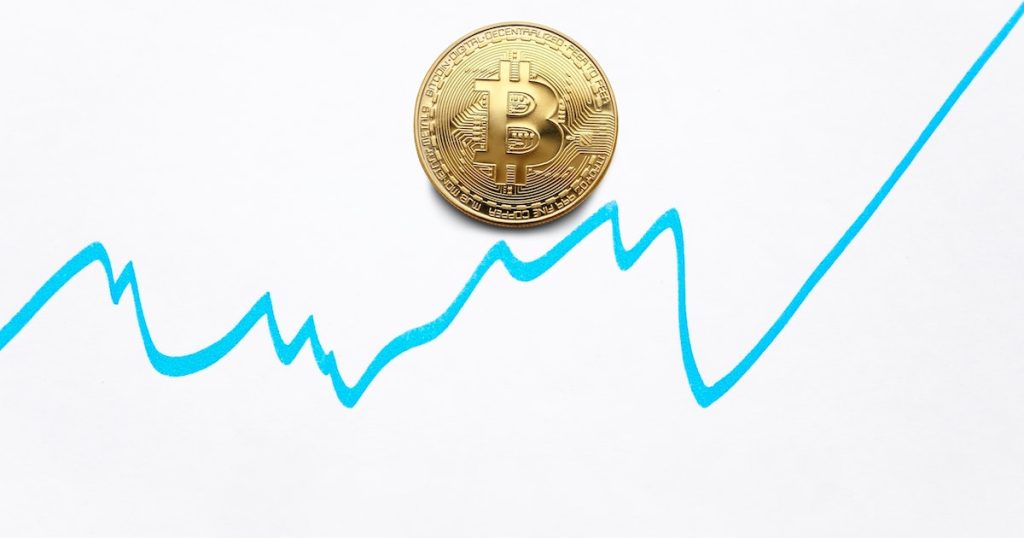The picturesque town of Prescott, nestled in the heart of Arizona, has a rich tapestry of history waiting to be unraveled. Its early days were shaped and molded by numerous factors, but few were as influential as mining.
The role of mining in Prescott’s early economy was a linchpin in its development and subsequent growth. This foundation not only supported the immediate needs of the then-budding town but also laid down the tracks for the thriving community we see today.

Origins of Mining in Prescott
The genesis of mining in Prescott traces back to the mid-19th century when whispers of gold and silver began luring prospectors and adventurers to Arizona’s rugged terrains. These early pioneers, equipped with little more than determination and basic tools, ignited a fervor that would shape Prescott’s destiny.
The discovery of rich ore deposits in areas like the Walker and Lynx Creek transformed the once-quiet region into a bustling hub of activity. As claims were staked and mines established, Prescott emerged not just as a beacon for those with dreams of striking it rich, but as a burgeoning community set against the backdrop of a mining revolution.
Geological Features Leading to Mining
The region surrounding Prescott is abundant with a variety of minerals. Gold, silver, and copper veins crisscross the underlying rock structures, making it a prime location for mining activities. The Bradshaw Mountains, located to the south of Prescott, in particular, were known for their rich gold deposits.
Geologists and early settlers soon realized the potential. The unique blend of sedimentary, igneous, and metamorphic rocks in the area made it a veritable treasure chest, awaiting exploration.
Initial Exploration and Discovery
It wasn’t long before the first tales of gold discoveries began circulating. In the 1860s, prospectors like Joseph R. Walker started exploring the region. Their exploits led to the establishment of the first mining claims. Historical records suggest that areas around Lynx Creek were among the earliest to be mined, leading to a mini gold rush.
The allure of wealth brought in a wave of settlers. They were driven by dreams of striking it rich and establishing a prosperous life in the Wild West
Economic Impacts of Mining
Prescott’s economic tapestry was intricately woven with threads of its mining endeavors. The discovery of minerals catalyzed an influx of prospectors and entrepreneurs, propelling the town into an era of rapid growth and prosperity. Local businesses thrived, catering to the needs of the mining community, while infrastructure developments were fast-tracked to support the booming industry.
The ripple effect was palpable, with every mined ounce adding to job creation, trade, and the town’s overall GDP. However, as with many mining-centric economies, Prescott also faced the challenges of fluctuating global commodity prices and the need for diversification, underscoring the complex interplay between mining and its economic ramifications.
Job Creation and Employment
Mining was not just about extracting minerals. It was a complex process requiring a multitude of skills and expertise.
- Prospectors to locate and stake claims
- Miners to extract the ore
- Smelters to refine the minerals
- Traders to barter and sell the produce
Supporting industries also flourished. Blacksmiths, carpenters, and general stores catered to the growing needs of the community. The employment opportunities extended beyond the mines, impacting the broader economy.
Revenue Generation and Economic Growth
With minerals flowing out of Prescott, the town’s coffers started filling up. Gold and silver fetched lucrative prices in markets beyond Arizona. Historical data indicates that by the late 1800s, Prescott’s mines had contributed significantly to the state’s economy.
Local businesses also thrived. With an influx of wealth, property values soared, and the town experienced an economic renaissance.
Influence on Property and Land Value
The land around proven mining sites became prime real estate. Prospectors and businessmen vied for a piece of the pie, leading to land auctions and sales. According to local archives, the prices of plots in prime locations saw tenfold increases in a matter of years.

The landscape of Prescott transformed as elegant homes, establishments, and institutions began taking shape, echoing the town’s newfound prosperity.
Social and Cultural Impacts
Mining in Prescott did more than just shape its economic contour; it deeply influenced its social and cultural fabric. As miners and their families settled, a mosaic of traditions, stories, and shared experiences emerged. The camaraderie of miners was reflected in festivals, while the tales of their exploits found voice in local folklore and music.
Community halls echoed with the sounds of dance and merriment, and the shared struggles and triumphs of the mining life fostered a unique Prescott identity. This bond, forged in the mines, went on to define the heart and soul of the town, creating a cultural legacy as enduring as the minerals they once extracted.
Formation of Mining Communities
Mining camps, initially temporary, evolved into permanent settlements. The camaraderie among miners led to the creation of tight-knit communities. Shared struggles and triumphs in the face of adversity cemented bonds.
Daily life in these communities was a blend of hard work and recreation. After long hours in the mines, folks would gather around campfires, sharing tales and forging friendships. The establishment of schools and churches reflected the desire for stability and growth.
Mining and Ethnic Diversity
Prescott’s mines attracted a global workforce. Immigrant workers from Europe, Asia, and other parts of the world converged on the town, each bringing a slice of their culture. This melange resulted in a rich tapestry of traditions, cuisines, and festivals.
Intercultural exchanges became commonplace. While there were occasional frictions, the overarching theme was one of unity and mutual respect. The community realized that diversity was its strength.
Evolution of Social Norms and Lifestyles
The constant influx of people brought in fresh perspectives. Old-world values met new-age thinking, leading to an evolution of social norms. Women, initially relegated to limited roles, began participating actively in business and community activities.
Art and entertainment saw a renaissance. Theaters, music halls, and even early cinemas became popular hangouts, reflecting the changing lifestyles and aspirations of the residents.
Infrastructure Development
The growth spurred by mining necessitated robust infrastructure to sustain it.
Transportation: Railroads and Roads
To facilitate the transport of minerals and cater to the growing populace, roadways, and rail lines were established.
The Atchison, Topeka, and Santa Fe Railway, for instance, played a pivotal role in connecting Prescott to larger markets, ensuring the smooth flow of goods and people.
Technological Advancements
The demands of mining led to innovations. Equipment became more sophisticated, ensuring efficient extraction.
Pneumatic drills, dynamite, and advanced pulley systems revolutionized the mining process. Simultaneously, the telegraph, and later the telephone, bridged communication gaps, knitting the community closer.
Urban Expansion
Prescott’s skyline began changing. From humble wooden structures, brick and mortar buildings began dotting the landscape.
The town’s planning reflected its aspirations. Streets were laid out systematically, public parks were established, and architectural marvels, many of which stand to this day, were erected.
Environmental Considerations
In the realm of mining, the lush landscapes of Prescott weren’t merely backdrops, but vital ecosystems intertwined with the industry. As the town burgeoned with mining activity, so too did the understanding of its environmental footprint.
Over time, the push for sustainable mining practices grew, balancing economic aspirations with ecological responsibilities. From reclamation projects that transformed exhausted mines to green initiatives that reduced waste and pollution, Prescott’s journey in mining became a testament to the delicate dance between progress and preservation.

Landscape Transformations
Large-scale mining operations altered the topography. Hills were leveled, and landscapes changed, sometimes leading to soil erosion and other ecological issues.
As mines were exploited, concerns about their sustainability grew. Over-extraction led to the depletion of some sites. Environmentalists and concerned citizens began advocating for responsible mining practices.
Responses to Environmental Challenges
The community began to recognize the importance of balancing economic growth with environmental preservation. Efforts were made to adopt sustainable mining practices. Reclamation projects were initiated where exhausted mines were converted into green spaces or utilized for other purposes.
Some mines even adopted early environmental impact assessments, ensuring that their activities would have minimal long-term damage. The town’s stakeholders understood that the beauty of Prescott’s landscapes was as much a treasure as the minerals beneath.
Decline and Evolution of Mining
The once-thriving mining industry in Prescott experienced an inevitable ebb, shaped by depleting resources, evolving economic landscapes, and growing environmental awareness. As mines exhausted their yields and global markets shifted, the town was poised at a crossroads.
Rather than languishing in the shadows of its golden past, Prescott showcased its adaptability. Mining’s decline paved the way for evolution, with the community transitioning into sectors like tourism, agriculture, and retail, ensuring that while the mines may have quieted, the spirit of growth and transformation remained ever-vibrant.
Factors Leading to Decline
Over time, as more mines were exhausted, the yields decreased. Coupled with fluctuating global commodity prices and increasing operational costs, many mines became unprofitable.
Moreover, the environmental concerns associated with mining practices garnered attention, leading to stricter regulations.
Shifts to Other Economic Activities
As mining slowed, Prescott’s adaptive community began exploring other avenues for economic growth. Tourism, bolstered by the town’s rich history and scenic beauty, began to take center stage. Agriculture, retail, and real estate also became vital components of the local economy.
Many former miners utilized their skills in construction, road-building, and other trades, ensuring that their expertise still contributed to the town’s prosperity.
Preservation and Remembrance
Recognizing the immense historical and cultural value of the mines, the community took steps to preserve them. Several old mines were converted into museums or tourist attractions, serving as a testament to the town’s storied past.
Events and festivals celebrating the golden age of mining became annual occurrences, ensuring that the legacy would never be forgotten.
Prescott Mining in Historical Memory
Prescott’s mining history is more than just a relic of the past; it’s a vibrant memory that resonates deeply within the heart of the community. The fervor of the gold rush, the struggles of the miners, and the town’s meteoric rise to prosperity have been immortalized in tales, songs, and landmarks scattered throughout the town.
Even today, as modern Prescott thrives on diverse economic avenues, the echoes of its rich mining heritage can be felt in every corner, reminding both residents and visitors of the indomitable spirit that once unearthed treasures from the depths of the earth.
Mining in Popular Culture and Literature
Stories of the early prospectors, their challenges, and their triumphs were immortalized in books, songs, and movies.
Local authors penned tales of adventure and romance set against the backdrop of the bustling mines. Tourists visiting Prescott often left with not just souvenirs but tales of the town’s glorious past.
Preservation of Mining Sites as Heritage
Several mining sites were deemed historically significant. Efforts were made to preserve them, with some even earning spots on the National Register of Historic Places.
These sites became focal points for educational trips, ensuring that future generations understood and appreciated their roots.
Annual Commemorations and Festivals
Yearly events celebrating Prescott’s mining history became community highlights. Parades, re-enactments, and miner-themed festivals drew residents and tourists alike.

These events served as reminders of the indomitable spirit of the early settlers and the community they built from scratch.
FAQs:
In this section, we will be delving into some of the most common inquiries and curiosities that surround our topic.
How did mining in Prescott compare to other regions in the American West?
Mining in Prescott, while significant, was a part of the broader mining boom across the American West. Places like California and Colorado had larger-scale operations, but Prescott’s contribution, especially to Arizona’s economy, was substantial.
What are the most famous mines in Prescott’s history?
The Walker and Lynx Creek areas had some of the most productive mines. The stories of these mines are deeply embedded in Prescott’s lore.
How did mining influence the architectural landscape of Prescott?
The wealth generated from mining led to the construction of grand buildings, many of which are still standing. These structures, built with an eye for detail and elegance, reflect the prosperity of that era.
Are there still active mines in or around Prescott today?
While large-scale mining operations have ceased, there are still some small-scale operations and exploratory activities. However, mining no longer holds the economic prominence it once did.
How can one visit and learn more about Prescott’s mining heritage?
There are several museums, historic sites, and guided tours that delve into Prescott’s mining history. A visit to the local tourism office can provide more detailed information.
Summary: Role of mining in Prescott’s early economy
Prescott’s history is a tale of perseverance, innovation, and community spirit. Its roots, deeply embedded in mining, have grown into a vibrant tapestry of culture, heritage, and economic diversity. The role of mining in Prescott’s early economy is undeniable, and its legacy, though no longer the primary economic driver, remains an integral part of its identity.
This rich history, combined with its natural beauty and welcoming community, makes Prescott a gem in the crown of the American West.



Leave a Comment
You must be logged in to post a comment.